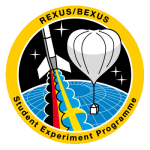Scientific objectives
Our scientific objective is to study the ionization of the atmosphere in different altitudes. We want to measure the variations of electric conductivity with altitude by recording the mobility spectrum of positive and negative ions. The measurements will be carried out by using Gerdien Condensers.
Such investigations are especially interesting at high latitudes, where galactic cosmic rays participate in greater degree in ionization processes. The polar cap, where measurements will be carried out, is also a special location from the point of view of ionization taking into account the direct connection partly to the tail of the magnetosphere, partly to the interplanetary space.

We measure the positive and negative polar conductivities by two Gerdien condensers designed for rocket measurements. The condensers are placed on the side of the rocket and, as it moves, air flows between the two cylindrical electrodes. The ion flow is directed toward the central electrode of the Gerdien condensers due to the voltage between the inner and outer electrodes. The current formed by the ion flow is going to be measured.
Technological platform
The Gekko experiment consists of two Gerdien condensers and an electronic box. The condensers are mounted on the outer structure of the rocket and the electronic box is placed inside the module. The electronic box contains three PCBs: the PSU board, the OBDH board and the PCB for the analogue electronics. The condensers are connected to the analogue PCB with a double shielded coaxial cable.
The bias voltage of the condensers is adjusted to the velocity of the rocket. A voltage sweep is performed in five steps to achieve the average mobility spectrum for five ion groups. The average density of the ion groups can be determined from the measured current.









